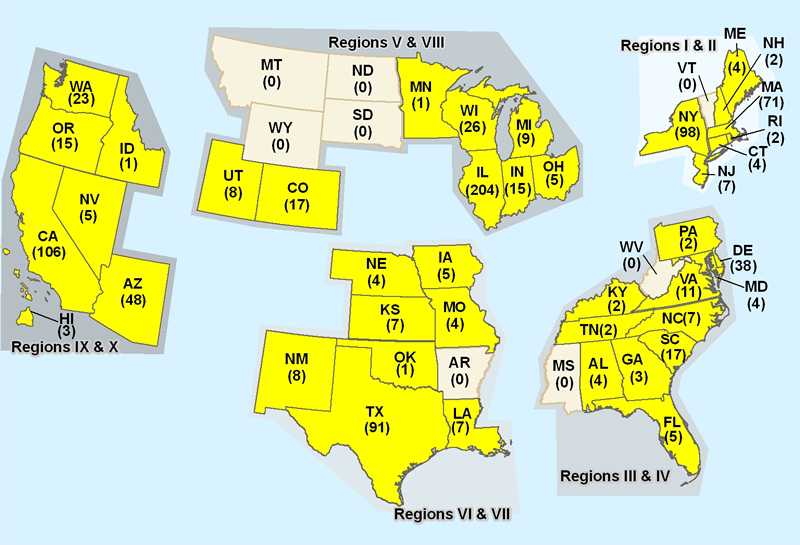Content on this page was developed during the 2009-2010 H1N1 pandemic and has not been updated.
- The H1N1 virus that caused that pandemic is now a regular human flu virus and continues to circulate seasonally worldwide.
- The English language content on this website is being archived for historic and reference purposes only.
- For current, updated information on seasonal flu, including information about H1N1, see the CDC Seasonal Flu website.
CDC H1N1 Flu Update: U.S. Human Cases of H1N1 Flu Infection
Novel Influenza A (H1N1) Cases by HHS Joint Field Office Coordination Groups
May 7, 2009, 11:00 AM ET
896 Confirmed Cases in 41 States

| States | Laboratory confirmed cases |
Deaths | |
|---|---|---|---|
| Alabama | 4 | ||
| Arizona | 48 | ||
| California | 106 | ||
| Colorado | 17 | ||
| Connecticut | 4 | ||
| Delaware | 38 | ||
| Florida | 5 | ||
| Georgia | 3 | ||
| Hawaii | 3 | ||
| Idaho | 1 | ||
| Illinois | 204 | ||
| Indiana | 15 | ||
| Iowa | 5 | ||
| Kansas | 7 | ||
| Kentucky* | 2 | ||
| Louisiana | 7 | ||
| Maine | 4 | ||
| Maryland | 4 | ||
| Massachusetts | 71 | ||
| Michigan | 9 | ||
| Minnesota | 1 | ||
| Missouri | 4 | ||
| Nebraska | 4 | ||
| Nevada | 5 | ||
| New Hampshire | 2 | ||
| New Jersey | 7 | ||
| New Mexico | 8 | ||
| New York | 98 | ||
| North Carolina | 7 | ||
| Ohio | 5 | ||
| Oklahoma | 1 | ||
| Oregon | 15 | ||
| Pennsylvania | 2 | ||
| Rhode Island | 2 | ||
| South Carolina | 17 |
||
| Tennessee | 2 |
||
| Texas | 91 |
2 | |
| Utah | 8 | ||
| Virginia | 11 |
||
| Washington | 23 | ||
| Wisconsin | 26 |
||
| TOTAL (41) | 896 cases | 2 deaths | |
International Human Cases of Swine Flu Infection *Case is resident of KY but currently hospitalized in GA. |
|||
The ongoing outbreak of novel influenza A (H1N1) continues to expand in the United States. CDC expects that more cases, more hospitalizations and more deaths from this outbreak will occur over the coming days and weeks.
CDC continues to take aggressive action to respond to the expanding outbreak. CDC’s response goals are to reduce spread and illness severity, and provide information to help health care providers, public health officials and the public address the challenges posed by this emergency.
CDC is issuing updated interim guidance daily in response to the rapidly evolving situation.
Antiviral Guidance
CDC has issued guidance for health care providers on the use of antiviral medications during the current outbreak. The priority use for influenza antiviral drugs is to treat severe influenza illness and people who are at high risk of serious influenza-related conditions.
School Guidance
At this time, CDC recommends the primary means to reduce spread of influenza in schools focus on early identification of ill students and staff, staying home when sick, and good cough etiquette and frequent hand washing. Decisions about school closure should be at the discretion of local authorities based on local considerations. (See the School Guidance.)
Increased Testing
CDC has developed a PCR diagnostic test kit to detect this novel H1N1 virus and has now distributed test kits to all states in the U.S. and Puerto Rico. The test kits are being shipped internationally as well. This will allow states and other countries to test for this new virus. This increase in testing capacity is likely to result in an increase in the number of reported confirmed cases in this country, which should provide a more accurate picture of the burden of disease in the United States.
More on the Situation
- Links to non-federal organizations are provided solely as a service to our users. These links do not constitute an endorsement of these organizations or their programs by CDC or the federal government, and none should be inferred. CDC is not responsible for the content of the individual organization Web pages found at these links.

